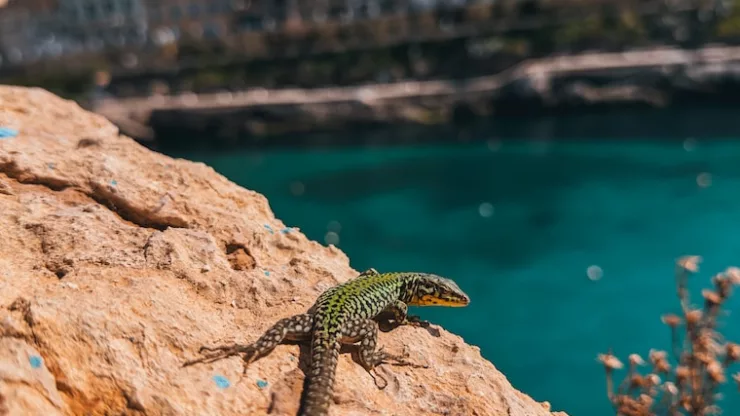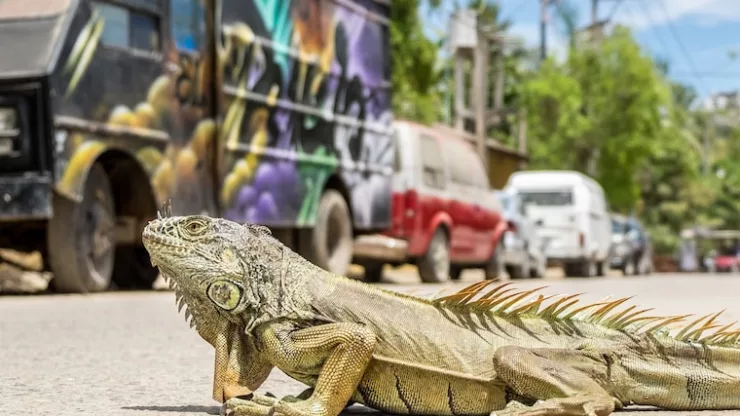Lizards are not the first animals that come to mind when you think of urban life. However, urban areas have become a new habitat for many lizard species.
But what do urban lizards eat?
A recent study sheds light on the diets of urban lizards and why studying their diets is important for conservation efforts.
Jump to Section
Introduction
Overview of Urban Lizards
Urbanization is one of the biggest drivers of habitat loss worldwide.
However, some animal species have adapted to living in urban areas, including lizards.
Urban lizards can be found in parks, gardens, and even on buildings.
They play an important role in urban ecosystems by controlling insect populations and serving as prey for larger animals.
Importance of Studying Urban Lizard Diets
Understanding the diets of urban lizards is crucial for conservation efforts.
Changes in diet can have significant impacts on lizard populations, and studying their diets can help us understand how they are adapting to urban environments.
Furthermore, knowing what urban lizards eat can help us create more suitable habitats for them within urban areas.
Methods
Study Design and Sampling
The study was conducted in a city park in the United States, where two species of lizards were present – the eastern fence lizard and the green anole.
The researchers collected lizards from three different habitats within the park – a grassy area, a wooded area, and an area with a mix of grass and trees.
Data Collection and Analysis Methods
The researchers collected lizard fecal samples and analyzed them to determine the lizards’ diets. They identified the prey items in the fecal samples using microscopy and DNA barcoding.
Results
Diet Composition of Urban Lizards
The study found that urban lizards have a diverse diet that includes insects, spiders, and other arthropods.
The eastern fence lizard predominantly ate spiders, while the green anole consumed a wider variety of prey items, including insects and spiders.
Comparison of Diet Between Different Urban Environments
The study also found that the diet of urban lizards varied depending on the habitat they were in.
Lizards in the grassy area consumed more insects, while those in the wooded area ate more spiders.
Discussion
Implications of Urban Lizard Diets
The study highlights the importance of studying the diets of urban lizards. By understanding what they eat, we can create more suitable habitats for them within urban areas.
Furthermore, changes in diet can have significant impacts on lizard populations, and studying their diets can help us understand how they are adapting to urban environments.
Relationship Between Diet and Urbanization
The study also found that urbanization has resulted in changes in the diets of lizards.
For example, the eastern fence lizard, which typically feeds on ants, has shifted its diet to include more spiders in urban areas.
Future Research Directions
The study provides a foundation for future research on urban lizards.
Further research could investigate how diet affects lizard behavior and reproduction, as well as how lizards are influenced by other urban factors such as pollution and habitat fragmentation.
Conclusion
Summary of Study Findings
The study found that urban lizards have a diverse diet that includes insects, spiders, and other arthropods.
Their diets vary depending on the habitat they are in, and urbanization has resulted in changes in their diets.
Importance of Understanding Urban Lizard Diets for Conservation Efforts
Studying the diets of urban lizards is crucial for conservation efforts.
By understanding what they eat, we can create more suitable habitats for them within urban areas and better understand how they are adapting to urban environments.
FAQ
What do urban lizards eat?
Urban lizards have a diverse diet that includes insects, spiders, and other arthropods.
How can studying urban lizard diets help conservation efforts?
Understanding the diets of urban lizards can help us create more suitable habitats for them within urban areas and better understand how they are adapting to urban environments.
How has urbanization affected the diets of lizards?
Urbanization has resulted in changes in the diets of urban lizards. For example, some species have shifted their diets to include more spiders in urban areas.
I’m a nature enthusiast and creator of Metro Wilds and have spent years exploring the great outdoors.
With a passion for environmental conservation and sustainability, I have dedicated my career to writing about the beauty and wonders of nature, as well as the threats facing our planet.
Contact me at [email protected] for assistance.





